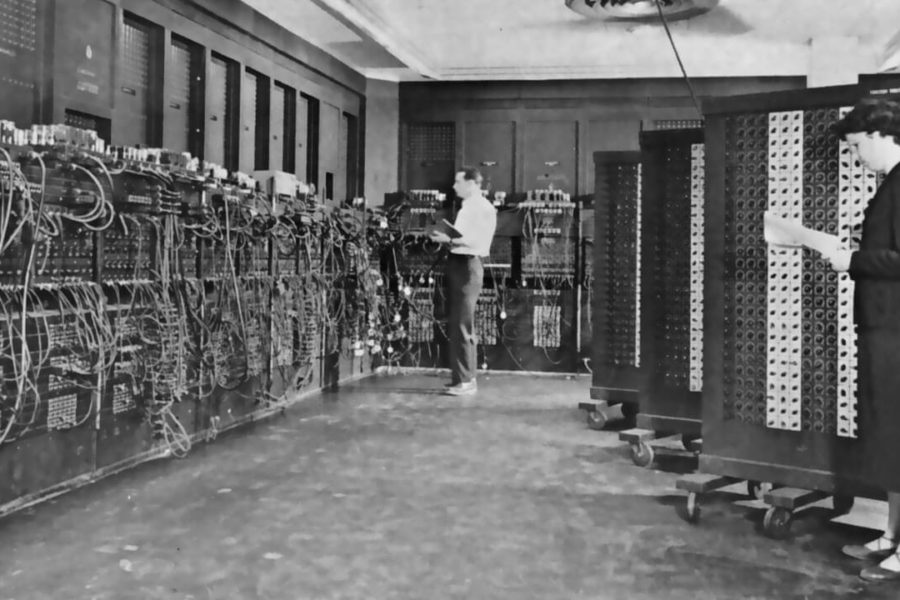Of all the places in the world you could hang out, the morgue has to be at the bottom of most people's list. Maybe as a visitor you'd like to hang out, but as a resident, well, it's no fun.
In general, the morgue is a gloomy place, but it turns out that if you dig deeper, sometimes it is even worse.
10. Friends stole John Barrymore's body from the morgue.

It’s never easy to say goodbye to someone you love, whether it’s a friend or family. Losing someone often feels like losing a part of yourself, and in the immediate aftermath, your grief may even feel like you’re losing yourself. How we deal with our grief varies from person to person, and you may have heard that there’s no wrong way to express this emotion. However, we can probably all agree that some ways of expressing grief are more common than others. And some may be frowned upon, to say the least.
Actors Errol Flynn and W. C. Fields were known to be friends with John Barrymore. The famous actor and grandfather of Drew Barrymore was one of the main characters of Hollywood's golden age. He died of cirrhosis of the liver and pneumonia in 1942. His friends did not take it very well.
After he died, W. C. Fields and Sadakichi Hartmann went to the city morgue and Barrymore's body was stolen According to Flynn's memoir, some friends told the story that Barrymore's aunt was so distraught that she needed to see him one last time, so they convinced the undertaker to let them borrow his corpse for an hour. This and bribe of 200 dollars sealed the deal.
The body was brought to Flynn's house and placed on the couch as a prank, and then they waited for Flynn to come home. Flynn allegedly freaked out on his porch, and the others returned the body, appropriately traumatizing Flynn.
9. Cruise ships have morgues large enough for multiple bodies.

For a certain group of people, a cruise is the ultimate luxury vacation. A beautiful seaside resort with all the amenities, what more could you want? And sure, cruises are known to have problems from time to time, but most of them turn out just fine, right?
However, nothing is always good, and cruise ships have to be prepared for this. People live on board these ships for weeks or more 30% passengers over 60 years old. About 14% of them are over 70 years old. So it is not impossible to imagine a scenario in which a passenger could die quite unexpectedly while the ship is at sea.
For this reason, although they usually never advertise it, every cruise ship has a morgue. Morgues have small refrigerators , capable of holding multiple bodies. In a pinch, a freezer could be used. Presumably, if something extremely unforeseen were to take away enough passengers, the ship would call for air help, and a helicopter could fly the bodies back to dry land.
People die on cruise ships to 200 people per year , so it's just part of the standard procedure. Any ship should be able to handle between 6 and 10 bodies.
8. There are approximately 40,000 unclaimed bodies in US morgues.

Have you ever seen a TV show or movie where someone has to go to the morgue to identify a body? It's often a big emotional revelation, and sometimes a twist, when we discover that the deceased is not who we thought they were. But what happens next? What happens in real life if no one shows up to identify that body?
It turns out this happens more often than you think. Much more often. The real numbers are sobering and quite sad. In the morgues of the USA can be up to 40,000 unclaimed bodies . In 2021, Maryland alone had 2510 unclaimed bodies , which is about 4% of the total in the state.
Some of these unclaimed bodies are homeless people who have no friends or family to claim them, but not all. There are a number of unclaimed bodies that have family and loved ones who refuse to come and claim them. Sometimes it is as simple as not being able to pay the financial burden of burial, so they simply leave the body where it is and let the state take care of it.
Different places handle it differently. Los Angeles buries unclaimed bodies in a mass grave every three years. In 2016, the county buried the remains of 1,400 people in a mass grave.
7. You can buy a corpse from a Philippine morgue to fake your own death.

Every now and then, there are movies where a character fakes their own death as a plot point. This happens in real life, but it's extremely rare. It's hard to say how often, though, because if it works, we'll never know.
If you've ever wanted to do this yourself or suspect someone else has, you might want to take a look at the Philippines. It turns out that for Death Kits there is a profitable industry . This is where you pay around £350 for fake documents saying you are dead, but more importantly, a real corpse. We just mentioned that the US has a lot of unclaimed bodies, but so do the Philippines, and people have started selling them for fake deaths.
There have been several documented cases of travelers being caught doing this. It is also worth noting, as one PI pointed out, that if you are involved in this deal, you have dealing with criminals , who now have serious blackmail on you so that they can continue to milk you for money later. Fake your own death at your own risk.
6. The parents of a dead teenager discovered that his brain was stored in a jar at the morgue.

Picture this scenario. You're in high school and a friend and classmate of yours dies in a car crash. It's a tragedy and people are distraught, but life goes on. Time passes. A few months later, you're on a field trip with your school's forensics club and you head to the city morgue. While you're there, you see a jar on a shelf. It contains a human brain, and on the outside of the jar is a label with a name. The name of your friend who died in the plane crash. The morgue kept his brain on the shelf for months. What do you do with this information?
For some children in New York City, this actually happened to them, and they eventually told the sister of Jesse Shipley, who died in a car accident in 2005. Shipley's parents knew their son was being cut open, but they also later buried him, assuming his body was whole.
The medical examiners defended their actions, pointing out that determining cause of death is a slow process, and in this case they needed more time to gather evidence. Brains need to be kept in fluid for several weeks to prepare them for examination, during which time bodies are usually buried. They were simply following standard procedure. The family disagreed and sued, but the court sided with the city No rules were broken and the pathologist did what they were supposed to do while the family was still able to bury their son as per the ruling.
5. The Paris Morgue was once a place of entertainment

In the modern era, horror movies are big business, and fans love to watch a little grisly chaos. You could argue that it’s in our DNA. People like the dark, as historically evidenced by cases like Paris Morgue , which was the city's go-to place for nighttime jumping.
In the 19th century, the Paris morgue was something of a zoo. People came to gawk at the corpses. If someone died under mysterious circumstances, the crowds were so big that they spilled out onto the street and stopped traffic. Everyone wanted to see the victims with their own eyes. The death of one little girl attracted attention 150,000 people .
A story in a newspaper was one thing, but people wanted to see it for themselves. It brought a horror story to life, so to speak, and it was great fun. Vendors sold food on the street, and police had to keep order because the crowds were often noisy. It was like an open-air concert with dead people instead of orchestras.
4. People still regularly wake up in morgues

There is an oft-told story about how, long ago, some coffins had little strings in them that allowed those inside to pull them and ring the bell. bell , if they woke up and were clearly not dead and needed rescuing.
In today's world we don't bury people with bells. But some still do. wake up in the morgue . One woman woke up in the refrigerator after she was pronounced dead 11 hours earlier. The other man was about to be embalmed when he came to.
How did this happen? At least in the US, many coroners are elected officials and in fact, they don't have a medical education . So they don't have the qualifications to actually determine whether someone is alive or dead unless it's as obvious as it would be to any layperson.
3. There is a photographer who takes his subjects from morgues

Many artists seem to benefit from a muse. John Carpenter enjoyed working with Kurt Russell. Andy Warhol was inspired by Edie Sedgwick. A at Joel-Peter Witkin's There are corpses. He uses bodies from morgues, and to say his work has been controversial is a gross understatement of the word "controversial." His work features images that most horror films don't use.
He obtained many of the bodies for his work from Mexico, where he made a deal with a hospital that allowed him use unclaimed bodies and parts to stage their photos. The end result is a beauty for some and a nightmare for others.
2. Idaho coroner accused of using human remains as fertilizer.

In general, there are a few things you can expect from human remains. An examination to determine the cause of death. Maybe a full autopsy. Embalming. Cremation or burial. And that's about it. So when the coroner decided to take the remains home to use as fertilizers for the garden , it was unusual. That's what a deputy coroner in Canyon County, Idaho, said back in 2018.
This was one of several charges , brought against the coroner, which also included harassment and creating a hostile work environment. Whether any of this was ever proven remains questionable, as the media seems to be paying little attention.
1. The legal sale of human body parts is worth millions

We've seen that there is already a market for bodies to fake death, and you've probably heard stories about black market organ sales for years. Well, it's getting a lot worse. And legally, too.
If you've ever lost someone and made arrangements for the body, someone may have approached you with an offer. You can get a cheaper burial/cremation if you donate the body for study. You know, for science. Advanced medical research , as they call it.
Your loved one's body becomes the property of the broker if you agree to this deal. This is the part where it becomes a complete horror movie nightmare.
In Nevada, people living near a funeral home began to notice a very foul odor. Also, someone was throwing blood-soaked boxes into the dumpster. Police arrived to investigate and found a man in a lab coat hosing down a frozen human body in the yard. With a garden hose. In the middle of the day. Pieces of the corpse were running down the street in the gutters.
The company sells body parts for research and study. Not for transplantation, which is regulated. As such, there are few laws governing the practice. The bodies were not obtained illegally, and they do not have to meet any medical requirements.
The brokers cremate the body part as promised, and the families get what they asked for. The company keeps the profitable parts and sells them to schools or research centers at huge profits. At least one company made more than $12 million a year. And in four states that track data on these bodies, more than 50,000 bodies and 182,000 body parts were shipped between 2011 and 2015.
In one case, the man earned more $13 million in 6 years, selling the diseased parts he cut out with a chainsaw and stored in refrigerators filled with mouthwash.














Оставить Комментарий